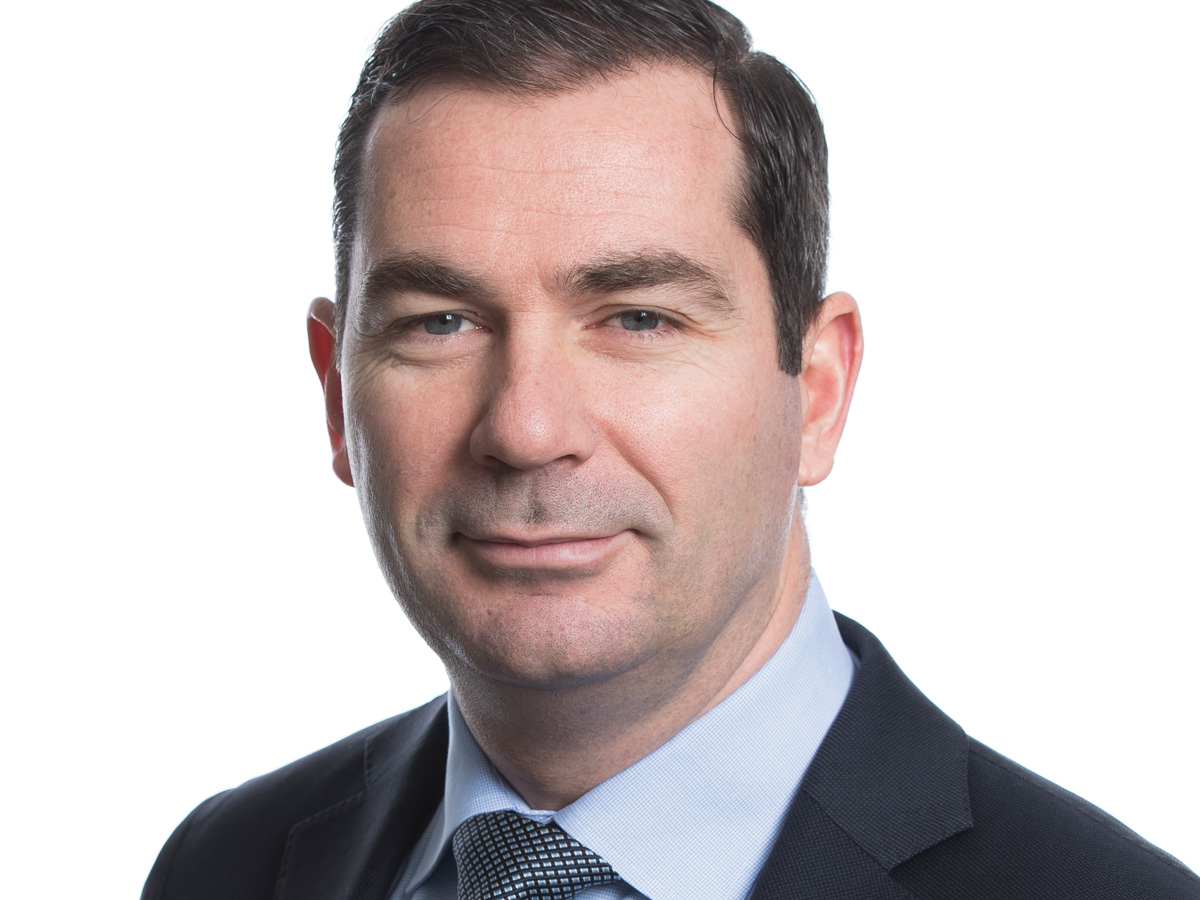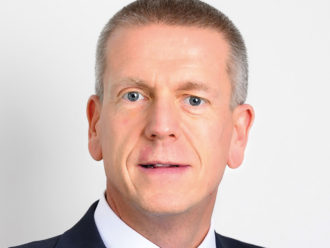Barry Kenneth, chief investment officer at the Pension Protection Fund (PPF) talks to Mona Dohle about how he manages rapid asset growth, market volatility and opportunities in credit markets.
How is the PPF managing the impact of Covid 19 on a practical level?
We’ve been working from home now for about four weeks. Our IT department has done a great job in helping us to arrange the transition to working from home. We have set up Bloomberg and some of the analytical tools so from a practical perspective we have most things we need at home to help soften the blow. What is slightly more challenging is not being in the same office. I like to interact with people face to face on a daily basis, it helps with decision making and to keep everyone together and focused on the same outcome and to be able to hear different voices. I am a bit old school, I much prefer to be interact with people directly. Right now we always have to plan meetings or calls to talk. But in general, it works as well as it could do, we’re managing the portfolio pretty efficiently.
A lot of companies are facing a very challenging economic environment. Do you think there will be an uptake in demand of DB schemes joining the PPF?
If the government and the central bank hadn’t committed the levels of support that we have seen, the whole of the UK industry would be a lot more vulnerable. The interesting question is now to see how long we will be in lockdown, how long is our industry effectively going to stay closed, and what will be the operating model when we come out of this pandemic. It is very clear to me that it will be very different to the one we had going into this crisis.
So if there was an increase in demand to join the PPF, how would you manage that on an operational level?
Onboarding any set of assets always involves a set of challenges. But when I joined the PPF just over six years ago, our assets were at £10bn and they are now North of £35bn so we have been on a growth spurt for the last six or seven years. That means our model and our processes are very much set up so that if we were to assume a bunch of assets of a significant order that wouldn’t really worry me from an operational perspective. But the other side of that is that if corporates do become insolvent and go into the assessment period, it takes one to two years before they are set up and hit our controlled assets. We would tend to plan before insolvency if it is a scheme that is on our radar and in that assessment period we work very closely with the trustees in order to evolve the shape of the assets into something mimicking what our investment portfolio runs.
Would it be a staged process whereby you transfer the most liquid assets first?
No, the assessment period is where a couple of big things are happening. The first step is to ensure that the data is all clean to ensure we fully understand what we are taking on board. Some schemes are better funded than PPF levels which gives them an opportunity to try and and seek an insurance solution, I.e. they might not need us. But this whole operational process of cleaning up the data happens outside my team so we do have an element of time to plan for when the assets do come in. But the assets then come in all at the same time and we need to decide beforehand whether we will list the assets out or just assume them because they fit our investment processes.
Ok, so let’s talk in a bit more detail about your asset allocation strategy. According to your most recent asset allocation overview, you had around 40% of your portfolio invested in liability matching assets, and another 41% in return seeking assets, although predominantly in bonds. How has this played out in the current crisis?
If you look at our portfolio from a really simplistic view, we have about 40% government bonds which back our LDI programme and we use both physical and non-physical instruments in order to manage interest rate- inflation risk and external liabilities. So you could say 40% of our portfolio are there to manage liability risk and the other 60% are predominantly in return seeking assets, I wouldn’t say that most of these assets are in bonds. In terms of the return-seeking assets, at least half of these assets are in non-bond instruments. The reason why we still have a relatively high bond allocation overall is because of the LDI programme but we have investments in most asset classes, including private equity, real estate, timberland, farmland and agriculture. So we have a lot of assets outside bond-like instruments.
Are you considering any changes to your asset allocation?
We look at our asset allocation all the time. Coming into this pandemic, we had effectively put lots of protection into our portfolio already. Not necessarily because of this eventuality but more because of Brexit and asset prices where in normal times we would have been screaming sell.
So we have been running an overweight on cash for quite a long period of time. In our listed equities portfolio, which is an active portfolio, we allocated 20% of that into absolute return so we could take the beta down but still have an active management.
Our credit portfolio doesn’t just have UK corporate bonds in there, it will have things like long-lease property, ground rents, structured notes and some loans. We have enhanced that portfolio over the last year. So if you look at corporate bonds, like global high yield, we have a triple B triple B plus average rate whereas the average rate in our credit portfolio is closer to A-. We have added elements of protection last year as markets have gone higher and that stood us in good stead for this pandemic but I wouldn’t profess that we foresaw what was coming.
Because our funding levels are relatively high, we’ve come into this from a position of strength so we thought it was sensible to derisk as markets became fundamentally expensive.
With market values now coming down by quite a lot, would now be a good time to get back into the market and start investing again?
There are buying opportunities around and we have allocated capital to those. From a personal perspective I see more value in credit rather than in equity markets, the reason being obviously that credit markets spreads widened as equity markets fell. If you look at the the way governments and central banks have targeted their stimulus measures, they have initially focused on trying to control the yield curve. And the other element is to try and protect the cash flow and balance sheets of corporates by buying debt. I can see real reasons why that would underwrite credit, you now have a buyer at any price in the credit market. I am not quite sure how that filters into the equity market. If you look at the S&P 500 for example, we are getting close to 3000.
Whereas we’ve got corporate spreads in the US trading around 300 today and you effectively have an infinite buyer, being the government and the central banks that seems to be a much better reward than equity markets. So by the end of March we deployed more money into credit but we haven’t deployed more incremental money into equities.
Interesting, so that decision seems to be purely driven by central bank action rather than a change in the fundamentals of the underlying assets?
Oh no, before the Central Bank action, current spreads had already moved to levels which were quite extreme, because cash was king. If you go back to 2008, we saw a repeat of that situation whereby retail and institutional investors were selling at almost any price. So if you looked at at that time, at very robust companies with strong balance sheets and access to liquidity, there is no differentiation in the first let down between sectors and industries and companies, so we deployed some money into credit at that point.
We were effectively getting high yield spreads for investment grade companies with strong balance sheets. We were very selective as to where money was placed. It wasn’t into high yield or the lower part of the capital structure. It was more the higher end where we had plenty of protection. So we managed to lever some money into that.
So these assets were actually investment grade but trading at high yield spreads?
Don’t get me wrong, it is difficult anytime when you have a market in freefall to deploy capital, but from a risk reward perspective, we chose not to rebalance into equities as the market fell but to rebalance more into credit and it has worked out ok thusfar. I do think that there are an awful lot of challenges you can only clear when we come out of this. As much as the market reacted to the stimulus that came in from the central banks, I still think there will be real challenges for companies going forward. And I feel comfortable being more in credit as we come out of this but of course we have the ability to change that as we move forward.
We have already seen some concerns about liquidity in credit market, what happens if that translates into actual solvency risks? Unlike the 2008 crisis, which originated in the financial sector, this sector is very much rooted in the real economy. Do you foresee risks of companies going bankrupt?
Yes of course, but if I am concerned about bankruptcy I’d rather be in credit than in equity. Where we manage money internally we manage it at the higher end of the capital structure and the stimulus put forward by the government will protect these companies. They might have additional leverage as they move out of this but as long as they have got their cashflows in order and we chose industries that we expect to have good demand going forward, then it should be ok.
In the equity market, it could really go either way. If we come out of this lockdown and the demand side picks up very quickly and we end up in a turbocharged economy, given the extraordinary levels of stimulus we have seen, in which case we would want to be more invested in equities. We are of course still invested in equities at the moment, we’re just slightly underweight on our benchmark. It’s not that I don’t believe equities will go up again, I just want to see a lot more evidence that we are seeing a road towards an exit of the lockdown. Now with the S&P500, I think somewhere between 2600 and 2800 makes sense to me.
You are also holding a lot of alternatives in your portfolio, has that to some degree offset some of the volatility that we have seen?
I am not sure, as you know the valuations in private market’s aren’t happening in real time as they are in public markets, but that doesn’t mean that prices haven’t moved. It just means that you haven’t been informed that prices have moved. There are some things in a private markets portfolio which are not linked to the global GDP. If you look at things like infrastructure, farmland, timberland, agriculture, they are not traditional investments that will correlate directly with equity and credit markets.
But we expect our private equity portfolio to act very similarly to the equity portfolio albeit that we might not get the end of March mark until June but it should still come through. It might be that they are a bit more mark to model than mark to markets and ultimately if risk assets are linked to the economy, then generally over time you should get a remarking of these assets. I don’t buy the fact that private assets necessarily protect you more from volatility.
Well, they have been sold as that and are lot of people might be holding alternatives in their portfolio with the intention to diversify.
I guess I am a bit more realist than that, or an opportunist perhaps. don’t get me wrong there are certain private market assets that shouldn’t act the same way as credit and equities. But that comes down to the diversification across asset type, providing equity to companies is not necessarily that much different from providing equity through listed markets. You might get some more operational improvements but if demand goes down the toilet for companies in that sector, it should both have an impact.
If you look at the bigger picture across all asset classes, where do you see the key risks for investors at the moment?
If I look at the bigger picture you can throw away a lot of the models. I think people that wed themselves to models in terms of how this thing is going to play will face difficulties. Experienced market intuition, being able to be nimble and forward thinking is going to be quite important. I don’t think anybody knows how we will come out of this crisis.
Recessions that have been caused by banking events like 2008 or by the economy overheating or a change in government policy have a playbook in how it is going to end up. We don’t have a playbook which shows how this is going to end up. This is going to end up in a very deep recession, whether it is V shape, U shaped or L shaped. It is very uncertain how we are going to come out of this. The one thing that I do know is that we’re gonna have a lot more unemployed people. There is not going to be one day where everything is going to go back to normal. And we are relying very heavily on the medical science in terms of how we come out of this rather than economists and government. This is something we haven’t seen before. We have seen the Spanish flu in the 20th century but we haven’t had the kind of pandemic in a developed market before.
We have milestones that we look at and certain triggers that we’re looking at to get more confident and to establish if we want to be a bit more aggressive but we’re certainly not running to go and buy the equity market here or overweight on risk assets. We are stilll 10-15% lower than we were at the start of March and there is a good reason for it.
Presumably you’re not the only one.
Should we be 15% lower, 30% lower, 5% lower, it is difficult to know. What we have to do here is use our risk management process, we are very risk management focused so when we make decisions we take them with risk in mind. We are very deliberate in how we allocate money in what risk we are taking. So we don’t think this is about assets only, we have to look at our balance sheets and make sure we get the returns we expect.
I feel pretty good about where the portfolio is at. At the moment we are slightly cautious, we are running overweight cash, government bonds and a little bit of credit and underweight on equities. But if we reach one of our milestones next week we might change that. The good thing about the PPF and the way we are set up now is that because we manage half the assets internally, we can react an awful lot quicker to market changes.




